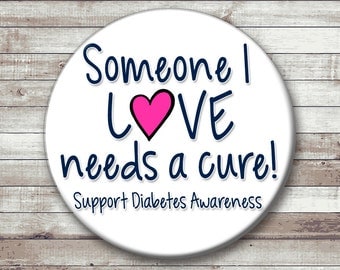http://www.blueridgeoutdoors.com/go-outside/hiking/backpacking-with-diabetes/
http://www.rainforesttreks.com/diabetes.asp
https://theactivediabetic.wordpress.com/2012/04/24/backpacking-with-type-1-diabetes/
The overarching theme is plan ahead and be prepared! Type 1 diabetics have more potential for life-threatening low blood sugar (hypoglycemia) and backpacking will use it up so frequent testing and regular snack breaks are a must.
Here's some very basic info on Type 1 from https://www.nlm.nih.gov/medlineplus/diabetestype1.html
Diabetes means your blood glucose, or blood sugar, levels are too high. With type 1 diabetes, your pancreas does not make insulin. Insulin is a hormone that helps glucose get into your cells to give them energy. Without insulin, too much glucose stays in your blood. Over time, high blood glucose can lead to serious problems with your heart, eyes, kidneys, nerves, and gums and teeth.
Type 1 diabetes happens most often in children and young adults but can appear at any age. Symptoms may include
- Being very thirsty
- Urinating often
- Feeling very hungry or tired
- Losing weight without trying
- Having sores that heal slowly
- Having dry, itchy skin
- Losing the feeling in your feet or having tingling in your feet
- Having blurry eyesight
A very scary issue that could arise is called diabetic ketoacidosis (DKA) (very different than ketosis).
Having a plan to respond to high blood glucose is important, because prolonged hyperglycemia can lead to diabetic ketoacidosis (DKA), a life-threatening complication. People with Type 1 diabetes are at higher risk of developing DKA than people with Type 2 diabetes, but it can happen in people with Type 2, particularly if they have a severe infection or injury.
DKA develops when there is not enough insulin in the body to use glucose for energy. When that happens, stored fat is broken down for energy instead, and acid by-products called ketones are created in the process. Ketones build up in the blood and eventually spill into the urine. The combination of high blood glucose, high blood ketones, and dehydration can lead to coma or even death.
It is recommended that you check your blood or urine for ketones if your blood glucose is over 240 mg/dl, if you are sick or have an infection, if you are under a lot of stress, if you have lost weight and don’t know why, or if you are not feeling well (even if your blood glucose is not elevated). One of the most common signs of DKA is having a sweet, fruity odor to your breath. Other signs include nausea, abdominal pain, flushed skin, rapid breathing, loss of appetite, or unconsciousness. The people you spend time with regularly should be aware of the warning signs of DKA since they can easily be mistaken for the flu.
Source: http://www.diabetesselfmanagement.com/managing-diabetes/blood-glucose-management/managing-your-blood-glucose-ups-and-downs/




